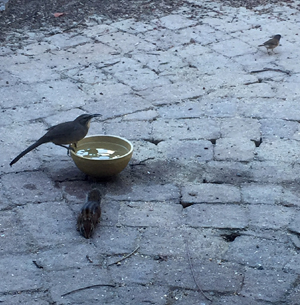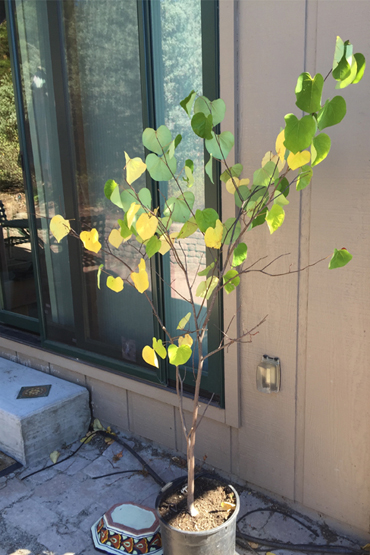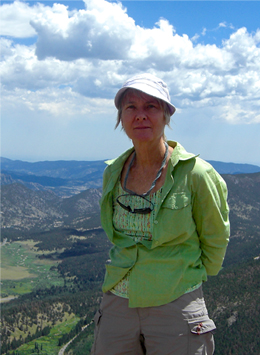December 2015, Issue #3
EXTINCTION/DEVOTION
TABLE OF CONTENTS
Editorial
Lise Weil
 Kristin Flyntz
Kristin Flyntz
I. EXTINCTION
Debra Magpie Earling
From The Lost Journals of Sacajewea
Melissa Kwasny
After•Word from Ghost Dance: the Poetics of Loss (Debra Magpie Earling)
Naeemeh Naeemaei
Dreams before Extinction
Deena Metzger
Our Radiant Lives
Mary Sutton
Her Body is Burning
Naomi Shihab Nye
My Grandmother Said
 Netanyahu
Netanyahu
Lena Khalaf Tuffaha
Arrest
Sara Wright
Tree Holocaust
Beverly Naidus
Curtain Call: Portable Altars for Grief and Gratitude
Marilyn DuHamel
Turning Point
Susan Cerulean
Bear Requiem
Margo Berdeshevsky
Our Safe Word
II. DEVOTION
Mei Mei Sanford
Serach Bat Asher Speaks
Lise Weil
First, a Mother: Interview with Megan Hollingsworth of
ex•tinc•tion wit•ness
Caroline Casey
Beauty from Brokenness: Interview with Lily Yeh
Sharon English
After•Word Our Call to Indigenous Consciousness: Taiaiake Alfred’s Wasáse
Cynthia Anderson
From the Beginning
 Nova
Nova
Anne Bergeron
Calling out the Names
Julie Gabrielli
Song of the Chesapeake
Nora Jamieson
I am Nothing without my Dead
Patricia Reis
After•Word Nora Jamieson’s Deranged
Rebecca Brams
The Bone in My Yard: a Story-Carrier’s Path
Lise Weil
Listening to Natural Law: Interview with Ayya Santacitta
Courtney Cable
After•Word Kenny Ausubel’s Dreaming the Future
Cynthia Travis
Offerings
Marilyn DuHamel

Turning Point
It is too quiet at my house. The songbirds are gone. Really, they are gone. I think they died. I may have killed them.
Before
On the patio just out my bedroom door there is a residential version of a savannah watering hole, my joy and offering during these parched years of Californian drought. A large green bowl I fill with water each day sits next to an iron birdbath, leaf-shaped, just steps away from a hanging cylindrical feeder chock full of sunflower seeds and millet.
Each morning, warm under my covers, I look out on this scene, curious who will be the first to arrive. Usually a few juncos beat the scrub jays but once the jays come everyone decides it is off limits until these blue rowdies leave.
The chipmunks don’t seem to care. Pretty cheeky themselves, they scurry under the swinging feeder, scrambling after spillage from messy jays who, filled for the moment, squawk their exit, which is eagerly anticipated by the varied audience in surrounding shrubs.
Juncos are the first to sweep back to vacated perches. Chickadees, sparrows, and pine siskins grasp nearby branches. A few stand demurely in line on the redwood railing until one frustrated onlooker finally darts in an attempt to dislodge that junco that has been there a very long time.
I muse from the comfort of my bed about these arrangements. Is there a protocol? Some avian code of ethics? Meanwhile, though the air is chill, small yellow warblers crowd the birdbath and sparrows turn the green bowl into a spa. One, then another, takes a turn to squat, splash, flap and ruffle.
Suddenly
This was the raucous morning world until a short while ago, when instead of critters, uneasiness crept in. Why so quiet? Why’s the feeder still so full? Is no one thirsty?
I did a search and discovered—horrified—there’s an avian epidemic in many locations across the country, including Northern California. Salmonella. It is deadly and contagious, especially to songbirds, especially those who congregate at feeders, water bowls, and baths where infected fecal matter can contaminate food and water. With the best of intentions, have I created a deadly environment? I remove everything: the green bowl, the birdbath, the feeders.
And I wonder, can it happen just like this? Populations wiped out?
In my darker moments I have despaired for future children: will they hear birdsong in the morning air? How many decades until skies are empty of birds? But it is now, not later, in my yard, on my street. I walk my dog and peer everywhere – not a songbird to be seen. Will they return? When? For how long?
I shudder and weep as I shed one more skin of innocence.
A Few Weeks Later
And still so quiet – no small fluttery movements in bushes. No morning trills or liquid lullabies. Juncos, sparrows, chickadees – so beautifully ordinary, so soothingly numerous, and now not. Because they are not here, they are with me all the time. Rarely have they been so near, so dear. Death and absence bring the cherished inside as constant companions.
In our long drought, rain manifests as “Not Raining”—its essence conveyed through absence. When have we—rain and I—ever been so familiar, as through this thirsty longing? Over and over I bring it close, smell what I remember of it, taste its clearness, hear its patter, the gush through gutters, feel it cover my upturned face and trickle, wet and cool, down my neck.
 This Morning
This Morning
An act of faith: I fill a brown ceramic bowl, small enough to discourage bathing, with cold clear water and pledge to sterilize it daily. Now I wait to see.
This is an act of self-forgiveness. The softening of all or nothing, the thawing of paralysis from guilt. A recognition of nature’s resilience. A few small birds have recently perched on the railing, peeked in my windows, pecked in the duff.
This Moment

As I keep watch for birds, a redbud sapling taps and brushes at the glass door, calls my attention. A little tree in a three-gallon container that I left to die—I couldn’t justify the water in this severe drought. The tree is not edible, not native, and the conservation guidelines suggest no. But it clung to life in desiccated soil, leaves unfurling despite neglect, heart-shaped and green. They quiver like alpine aspens.
This sapling seems to ask – can it stand sentry by my door? It has branches perfectly sized for songbirds’ tiny feet. Who am I to say no, to be so stingy? Right action is complicated: what was a green thumb has become extravagance as we shift from nurturers to conservators of resources.
Yet life wants to be lived, to green out. Guidelines are good, but rigidity becomes a drought of spirit. Can I say “yes” to this one redbud spreading its tiny boughs? For returning warblers to alight upon? A being that can live on recycled water from the bird basin?
Can I say “yes” to songbirds splashing and sipping as they slowly return? Count them - one by one, two by two.

Marilyn DuHamel - is a psychotherapist who has spent several decades listening deeply to the people who have entered her therapy office. In the last years, she has found herself increasing pulled to the nonhuman realm, tuning her ear, her heart, her psyche to the wild animals that approach her, to the sensate world out her door, and to the dreams and synchronicities that startle her with mystery and meaning. She is committed to following this trail, accompanied and sometimes led by her dog Shadow. She lives in the Santa Cruz Mountains in Northern California and can be reached at marilynduhamel@gmail.com
Bird Feeding Guidelines
Online resources provide information about avian diseases that humans can inadvertently foster as well as advice on how to prevent the spread of disease.
![]() Many guidelines suggest the following:
Many guidelines suggest the following:
- To prevent disease avoid overcrowding at feeders.
- Clean feeders at least every two weeks, soaking in a 5 - 10% bleach solution for 10 minutes, then rinse well and allow to dry.
- Birdbaths should be cleaned daily.
- If you suspect disease, remove all feeders for a month.
Want to comment on any Issue of Dark Matter, fill out the form here.
Copyright © 2014-2021 Dark Matter: Women Witnessing - All rights reserved to individual authors and artists.
Email: Editor@DarkMatterWomenWitnessing.com
Please report any problems with this site to webmaven@DarkMatterWomenWitnessing.com
